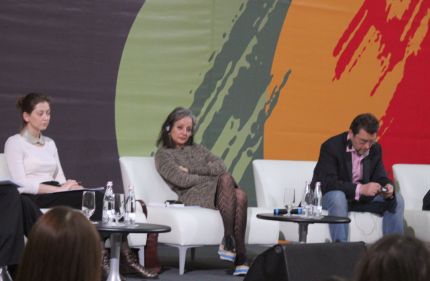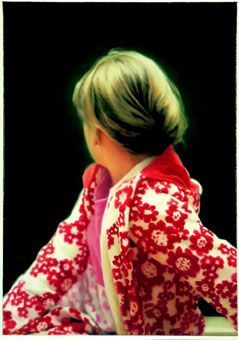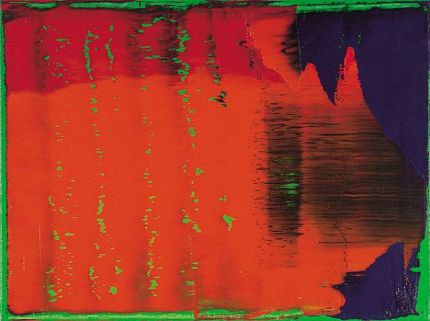
The Paris Account
Sergej Timofejev
15/12/2011
During the Art and Reality forum in Saint Petersburg a review of the latest trends in contemporary art market was presented by Judith Benhamou-Huet, a French art critic, writer and blogger, author of ‘The Worth of Art’ which has been translated into a number of languages. Arterritory.com asked her a few questions regarding the direction in which art criticism is developing, the new favourite place of residence among French artists and whether a purchase of a contemporary work of art could be considered a sound investment.
You spoke about the fact that the discussion at forum was transforming into an endless line of monologues...
Yes, it is getting a bit boring already. People do not listen to each other. I think it is a general problem among art critics. With them, ego always comes first.
So lack of respect for a different opinion is not just a Post-Soviet problem?
I can’t say I know that much about the Russian character and mindset. What I like is that people are spontaneous here. The problem is, they are not that keen to exchange opinions. Each of the speakers does his best to refute the previous one. They want to speak, they want to show off – which would seem a trait more suitable for artists... The good thing is, people do speak here; inFrance, it may well turn out by the end of a symposium that there is no-one willing to take the floor.
What was new for you in the debates of the forum?
A somewhat pessimistic point of view was proposed here to the effect that there is no longer avant-garde art, no good taste... Who has the right to make statements of this sort? As for me, you know, there is very little pathos in me mentally; it is simply that I am curious, I want to feed my brain.

In your presentation, you said that art criticism should change. In what way?
I think it should become more sexy (laughs). Just joking... I think it should be more appealing. If the art critic is an old professor who uses words no-one can really understand, then it is a genre for which there is no demand. We have to discuss contemporary problems from the point of view of contemporary citizens. The new art critic is quite possibly someone who also goes skateboarding and listens to the latest and hottest records. Who is able to look at things from a new angle – not someone who produces pages and pages of narcissist expatiation.
After all, who is an artist? It is someone who spends most of their time in introspection, examining themselves in relation to people around them. An art critic, on the other hand, is someone who examines the artist from without, from the world around them. And that is why an art critic needs a direct link with the world. The only thing left to us now is being super creative. And that goes for art critics as well.
In what way can an art critic be super creative?
In the ways in which they show art. Interestingly, many people speak of art here without showing any. Ours is a civilisation of images, and these people think they can make do with words alone. Isn’t it a bit strange?
Do you use a lot of visual material in your art blog?
Yes. I take the photographs myself. And I try to tell stories. It is a blog, I do not get paid for it. I get paid for writing articles. And this is why I don’t spend oodles of time on it. I try to write in a light and professional manner. I also hold small monthly conferences – ‘spoken blogs’ of sorts – at Palais de Tokyo in Paris. It is attended by lots of people and I simply tell them my life. I am not telling about my latest lover or anything like that, of course. For example, I went to Tel Aviv to attend the unveiling of the new building of their museum of art. So I show people the exhibited works of art, I show them the building and also pictures of the local beach which I also visited. And why not? It is also part of my impressions.
If you are telling stories in your texts, they become more informative and interesting, because everything is linked.
There have been some opinions voiced at the forum to the effect that art has taken the wrong route, a mistaken one. I find it strange to hear people speak of art going this way or that way. It is generally a somewhat more objective process than that.
And we are surrounded by a diversity of art! How can someone say that artists have chosen the wrong path or that there are no longer people who would swim against the tide? It’s absurd, really. There is so much of different art and so much of things we haven’t even discovered yet, because many artists work away from the general process and commercial success. And when people say things like that, it only goes to show that they are not informed. Van Gogh worked in complete solitude; only a handful of friends knew about him. American art collectors were buying Picasso’s works in the early 1900s; nevertheless, he was not particularly well-known at the time. We have to be very humble as we build our concepts of what is taking place in art today. The generally accepted view of our time might turn out to be very different fifty years from today. >>
Are there any new general trends among French artists?
Perhaps a trend of moving away. Many artists live in Berlinwhere housing is cheaper and where there is an interesting art community. They also travel a lot. I don’t think there is anything very specific going on among French artists creatively speaking.
Sometimes an interesting process may involve a whole group of artists based in the same locality. I don’t think there is anything like that going on inParis right now. Besides, rent is really expensive there so you need a lot of money to live and work there.
Is there an interest in different forms of expression? For example, are the new art media behind the traditional ones?
I suppose that in times of a crisis people are seeking stability. And there is this air of stability to paintings. Figural painting is quite popular, it sells well.

Gerhard Richter: Betty. 1988
Art market is one of your specialties…
Of course, everybody is fascinated by the incredible amounts of money spent on works of art. And yet art market should be discussed from the sociological point of view instead of the anthropological one. Why is it that people at this time spend this kind of money on this kind of art specifically?
Do you think that art market has a negative effect on contemporary artists?
There are quite a few artists who permit themselves to be influenced from outside. These things happen. For instance, I did a presentation on Gerard Richter, and it is a fact that his decorative things are worth so much more than his non-decorative ones. The same old logic applies here: look, a huge picture that matches the colour of our sofa and the flowers in the vase – that’s really cool, isn’t it? The art market is, of course, fundamentally linked with the decorative function of art.

Gerhard Richter. Grün – Blau – Rot. 1993
Hasn’t it always been the case?
Of course.
Has the art market become more influential than it was, say, 50 years ago?
Yes, and we owe it first and foremost to the increasing mediatisation: everybody is talking and writing of the gigantic amounts of money spent on art. On the other hand, you can easily find out the real prices on Artprice or Artnet. You want to know how much a Richter costs, here you are. It did not work like that fifty years ago. You would have approached an art dealer and he would have said: ‘I attended this auction, and a similar picture was sold for such and such an amount.’ What you can do today is have a quick search on the internet at night in your jammies and learn all the recent prices. That makes a substantial difference.
You said that our system of values and ranks, as far as contemporary art is concerned, may undergo some radical changes during the next fifty years. I that case, can an object of contemporary art be considered a valid investment?
People think they are investing their money. And yet it may well turn out to be a failed one.
The way it is in any other business?
Definitely. You cannot be sure of anything. In this case, however, there is also certain vanity involved: people want to demonstrate that they know what they are doing, they are on top of things. They could have bought some 20th-century art, something more established, and yet it is contemporary art, the art of today, that they want to own.